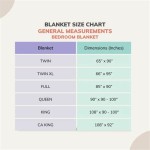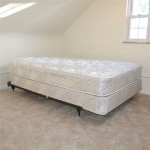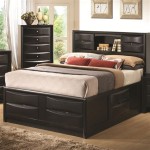Understanding the Size of a Full Bed in Feet
The dimensions of a full-size bed, often referred to as a double bed, are a crucial consideration when furnishing a bedroom. Understanding these dimensions in feet is essential for planning the layout of a room, selecting appropriate bedding, and ensuring comfortable sleep. The size directly impacts the suitability of the bed for different individuals and sleeping arrangements. This article provides a comprehensive overview of the standard dimensions of a full-size bed, its applications, and related considerations.
The standard dimensions for a full-size bed are 54 inches in width and 75 inches in length. Converting these measurements to feet provides a more readily understandable representation for many individuals. Fifty-four inches is equivalent to 4.5 feet, and 75 inches translates to 6.25 feet. Consequently, a full-size bed measures 4.5 feet wide by 6.25 feet long. These dimensions are crucial for determining whether a full-size bed will comfortably fit within a given bedroom space and accommodate the intended occupants.
The origins of full-size bed dimensions are rooted in the historical development of standardized bedding sizes. As the demand for more diverse sleeping arrangements grew, manufacturers established consistent measurements to facilitate the production and sale of mattresses, frames, and bedding accessories. The full-size bed emerged as a compromise between the smaller twin size and the larger queen and king sizes, catering to individuals who required more sleeping space than a single bed but did not have the room for a larger option.
Full-size beds are often chosen for guest rooms, smaller apartments, and children's bedrooms. Their compact size allows for efficient use of space while still providing ample sleeping area for one individual. In shared bedrooms, two full-size beds can be accommodated more easily than two larger beds, maximizing the floor space available for other furniture and activities. The versatility of full-size beds makes them a popular choice for a wide range of residential settings.
Suitable Room Size for a Full Bed
Determining the appropriate room size for a full-size bed involves considering factors beyond just the bed's dimensions. Adequate space is needed for movement around the bed, placement of nightstands, dressers, and other essential bedroom furniture. While the bed itself occupies 4.5 feet by 6.25 feet, the overall room size should be significantly larger to ensure functionality and comfort.
A minimum room size of 10 feet by 10 feet is generally recommended for a full-size bed. This allows for approximately 2.75 feet of space on either side of the bed and at the foot, providing sufficient room to walk around and access the bed comfortably. Additional space may be required depending on the size and number of other furniture pieces included in the room. For example, a larger dresser or multiple nightstands will necessitate a larger overall room size.
The placement of the bed within the room also influences the perception of space. Positioning the bed against a wall can maximize open floor space, whereas centering the bed in the room may create a more balanced aesthetic but require a larger room to avoid a cramped feeling. Careful consideration of room layout is essential for creating a comfortable and functional bedroom environment.
Beyond the minimum recommended size, larger rooms offer greater flexibility in furniture arrangement and overall design. A room measuring 12 feet by 12 feet or larger provides ample space for a full-size bed, nightstands, a dresser, and potentially a small seating area. This allows for a more luxurious and spacious bedroom experience.
The height of the ceiling also impacts the perceived spaciousness of a room. Rooms with higher ceilings tend to feel larger and more open, even if the floor space is limited. Conversely, rooms with low ceilings may feel cramped, especially when furnished with larger pieces of furniture. When assessing the suitability of a room for a full-size bed, it is important to consider both the floor space and the ceiling height.
Occupancy and Comfort Considerations
While a full-size bed can technically accommodate two adults, it is generally more comfortable for a single sleeper. The 4.5-foot width provides adequate space for one person to move freely during sleep without disturbing a partner. However, when shared by two adults, the limited width can lead to a cramped and uncomfortable sleeping experience.
For couples who prefer more personal space during sleep, a queen-size or king-size bed is generally recommended. These larger beds offer significantly more width, allowing each sleeper to move freely without encroaching on their partner's space. Sharing a full-size bed on a regular basis may result in restless sleep and discomfort for both individuals.
Full-size beds are often a suitable option for growing children and teenagers. The larger sleeping surface compared to a twin bed provides ample room for growth and movement during sleep. Many parents choose full-size beds for their children to avoid the need to upgrade to a larger bed as they grow older.
The type of mattress used on a full-size bed also influences comfort levels. A high-quality mattress with appropriate support and cushioning can significantly enhance the sleeping experience. Individuals with back pain or other physical ailments may benefit from a mattress specifically designed to provide orthopedic support. The choice of mattress should be based on individual preferences and specific needs.
The thickness of the mattress also affects the overall height of the bed, which can impact ease of getting in and out of bed. Individuals with mobility issues may prefer a lower bed frame and a thinner mattress to facilitate easier access. Conversely, taller individuals may find a higher bed frame and a thicker mattress more comfortable.
Cost and Bedding Options
Full-size beds typically offer a cost-effective option compared to larger bed sizes. Mattresses, frames, and bedding accessories for full-size beds are generally more affordable than those for queen-size or king-size beds. This makes full-size beds an attractive choice for individuals on a budget.
A wide range of bedding options are available for full-size beds, including sheets, comforters, duvet covers, and blankets. These bedding accessories are specifically designed to fit the standard dimensions of a full-size bed, ensuring a proper fit and comfortable sleeping experience. Consumers can choose from a variety of materials, colors, and patterns to suit their personal preferences and bedroom decor.
When selecting bedding for a full-size bed, it is important to consider the depth of the mattress. Deeper mattresses may require fitted sheets with extra deep pockets to ensure a secure fit. Standard fitted sheets may not be sufficient for mattresses with a significant thickness.
The cost of a full-size bed frame can vary widely depending on the materials used and the design. Simple metal frames are typically the most affordable option, while more elaborate wooden or upholstered frames can be significantly more expensive. The choice of bed frame should be based on budget, aesthetic preferences, and functional requirements.
In summary, the size of a full bed in feet, 4.5 feet by 6.25 feet, makes it a versatile option for various living situations. Understanding these dimensions is vital for effective space planning, occupancy considerations, and budgeting for bedding and related accessories. The full-size bed offers a balance between space efficiency and comfort, making it a popular choice for individuals and smaller living spaces.

Mattress Sizes And Dimensions Guide

King Size Bed Dimensions In Feet Google Search

Bed Sizes Uk Beds Dimensions Guide Bedhut

Queen Size Bed In Feet

Emperor Bed Size Guide For Ultimate Comfort

Mattress Sizes In India Top Size Chart 2024

King Queen Size Bed Dimensions Guide 2024 The Hindu
What Is The Size Of A King Sized Bed In Feet Quora

Cot Sizes Hot In Feet

Twin Vs Full Mattress Comparing Dimensions Cost More








